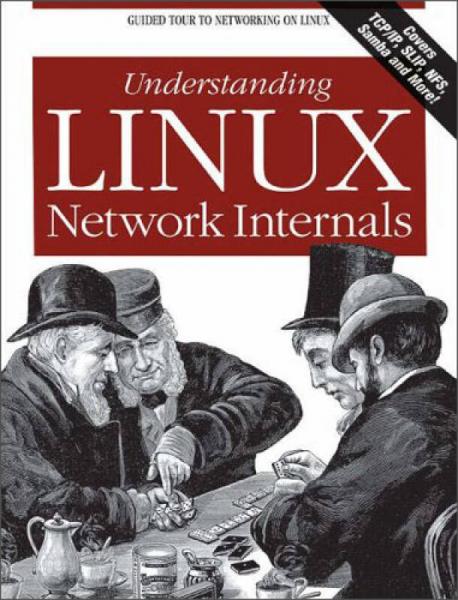Understanding Linux Network Internals
出版时间:
2006-01
ISBN:
9780596002558
定价:
696.80
装帧:
平装
开本:
其他
纸张:
胶版纸
页数:
1066页
正文语种:
英语
3人买过
-
If you've ever wondered how Linux carries out the complicated tasks assigned to it by the IP protocols -- or if you just want to learn about modern networking through real-life examples -- Understanding Linux Network Internals is for you.
Like the popular O'Reilly book, Understanding the Linux Kernel, this book clearly explains the underlying concepts and teaches you how to follow the actual C code that implements it. Although some background in the TCP/IP protocols is helpful, you can learn a great deal from this text about the protocols themselves and their uses. And if you already have a base knowledge of C, you can use the book's code walkthroughs to figure out exactly what this sophisticated part of the Linux kernel is doing.
Part of the difficulty in understanding networks -- and implementing them -- is that the tasks are broken up and performed at many different times by different pieces of code. One of the strengths of this book is to integrate the pieces and reveal the relationships between far-flung functions and data structures. Understanding Linux Network Internals is both a big-picture discussion and a no-nonsense guide to the details of Linux networking. Topics include:
Key problems with networking
Network interface card (NIC) device drivers
System initialization
Layer 2 (link-layer) tasks and implementation
Layer 3 (IPv4) tasks and implementation
Neighbor infrastructure and protocols (ARP)
Bridging
Routing
ICMP
Author Christian Benvenuti, an operating system designer specializing in networking, explains much more than how Linux code works. He shows the purposes of major networking features and the trade-offs involved in choosing one solution over another. A large number of flowcharts and other diagrams enhance the book's understandability. Christian Benvenuti received his masters degree in Computer Science at the University of Bologna in Italy. He collaborated for a few years with the International Center for Theoretical Physics (ICTP) in Trieste, where he developed ad-hoc software based on the Linux kernel, was a scientific consultant for a project on remote collaboration, and served as an instructor for several training sessions on networking. The trainings, held mainly in Europe, Africa, and South America were all based on Linux systems and addressed to scientists from developing countries, where the ICTP has been promoting Linux for many years. He occasionally collaborates with a non-profit organization founded by ICTP members, Collaborium.org, to continue promoting Linux on developing countries.
In the past few years he worked as a software engineer for Cisco Systems in the Silicon Valley, where he focused on Layer two switching, high availability, and network security.
-
内容简介:
If you've ever wondered how Linux carries out the complicated tasks assigned to it by the IP protocols -- or if you just want to learn about modern networking through real-life examples -- Understanding Linux Network Internals is for you.
Like the popular O'Reilly book, Understanding the Linux Kernel, this book clearly explains the underlying concepts and teaches you how to follow the actual C code that implements it. Although some background in the TCP/IP protocols is helpful, you can learn a great deal from this text about the protocols themselves and their uses. And if you already have a base knowledge of C, you can use the book's code walkthroughs to figure out exactly what this sophisticated part of the Linux kernel is doing.
Part of the difficulty in understanding networks -- and implementing them -- is that the tasks are broken up and performed at many different times by different pieces of code. One of the strengths of this book is to integrate the pieces and reveal the relationships between far-flung functions and data structures. Understanding Linux Network Internals is both a big-picture discussion and a no-nonsense guide to the details of Linux networking. Topics include:
Key problems with networking
Network interface card (NIC) device drivers
System initialization
Layer 2 (link-layer) tasks and implementation
Layer 3 (IPv4) tasks and implementation
Neighbor infrastructure and protocols (ARP)
Bridging
Routing
ICMP
Author Christian Benvenuti, an operating system designer specializing in networking, explains much more than how Linux code works. He shows the purposes of major networking features and the trade-offs involved in choosing one solution over another. A large number of flowcharts and other diagrams enhance the book's understandability.
-
作者简介:
Christian Benvenuti received his masters degree in Computer Science at the University of Bologna in Italy. He collaborated for a few years with the International Center for Theoretical Physics (ICTP) in Trieste, where he developed ad-hoc software based on the Linux kernel, was a scientific consultant for a project on remote collaboration, and served as an instructor for several training sessions on networking. The trainings, held mainly in Europe, Africa, and South America were all based on Linux systems and addressed to scientists from developing countries, where the ICTP has been promoting Linux for many years. He occasionally collaborates with a non-profit organization founded by ICTP members, Collaborium.org, to continue promoting Linux on developing countries.
In the past few years he worked as a software engineer for Cisco Systems in the Silicon Valley, where he focused on Layer two switching, high availability, and network security.
查看详情

暂无新书在售

 占位居中
占位居中





















